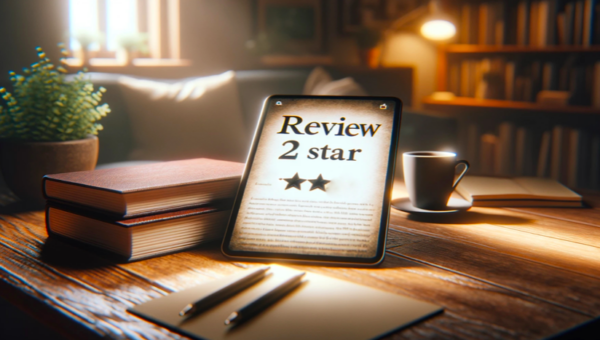In the evolving landscape of the publishing industry, authors are presented with an array of pathways to bring their literary creations to the eager eyes of readers worldwide. Each path, from the storied corridors of traditional publishing houses to the dynamic digital platforms of self-publishing, offers unique opportunities and challenges that can significantly impact an author’s income potential. Traditional publishing, often regarded as the esteemed gateway to literary recognition, involves an author partnering with established publishers to manage the publication and distribution of their work. This path is characterized by editorial support, marketing efforts, and distribution networks, but it also involves relinquishing a degree of creative and financial control.
On the other end of the spectrum lies self-publishing, a route that has gained tremendous momentum in the digital age. It empowers authors with complete creative autonomy, allowing them to publish their work directly to platforms that reach readers around the globe. While this path offers higher royalty rates, it also requires authors to shoulder the responsibilities of editing, marketing, and distribution, tasks traditionally managed by publishing houses.
Bridging the gap between these two is hybrid publishing, an innovative model that combines elements of both traditional and self-publishing. This approach provides authors with professional publishing services while still allowing them to maintain a significant level of control over their work. Authors might invest financially in the publication process, but they also benefit from higher royalties than those typically offered by traditional publishers.
Understanding the nuances of each publishing path is crucial for authors aiming to maximize their income potential. The choice between traditional publishing, self-publishing, and hybrid publishing can significantly influence not only the upfront costs and creative control but also the long-term financial returns from book sales. As the publishing industry continues to evolve, so do the opportunities for authors to craft a career that aligns with their creative vision and financial goals.
Understanding Author Income Potential
Author income potential refers to the possible earnings an author can achieve through the sales of their books and related endeavors. It encompasses not just the immediate financial returns from book sales, but also the broader revenue streams that may emerge over time, including speaking engagements, adaptations, and merchandise. Understanding this potential is vital for authors as they navigate their careers, especially in an industry as volatile and diverse as publishing.
Start Your Publishing Journey FOR FREENavigating the Financial Terrain
The income potential of an author is influenced by a constellation of factors, each interplaying with the others to shape the financial landscape of a writing career. The choice of publishing path stands as a foundational element in this equation. Traditional publishing may offer advances and professional marketing support, potentially leading to higher visibility and sales, but often comes with lower royalty rates. In contrast, self-publishing grants authors higher royalties per book sold, though it demands a more significant investment in marketing and distribution from the authors themselves.
The genre also plays a pivotal role in determining an author’s income potential. Certain genres, such as romance and thriller, have dedicated and expansive readerships, often resulting in higher sales volumes. Others might cater to more niche markets, presenting opportunities for specialization but possibly limiting the audience size.
Marketing strategies are another critical factor, as even the most captivating book may languish in obscurity without effective promotion. The advent of digital marketing and social media has leveled the playing field somewhat, allowing authors to connect directly with readers, but the strategies employed must be innovative and persistent to cut through the noise.
In summary, the author’s income potential is not a static figure but a dynamic possibility that shifts with market trends, publishing choices, genre preferences, and the efficacy of marketing efforts. Authors who adeptly navigate these waters, aligning their creative output with strategic insights, stand to maximize their financial returns in the complex ecosystem of the publishing world.
Traditionally Published Authors
Traditional publishing remains a coveted gateway for many writers, embodying the classic journey from manuscript submission to bookstore shelves. At the heart of this path are the publishing houses, venerable institutions that curate, polish, and distribute literary works. These entities bring together an array of professionals—from editors and cover designers to marketing and sales teams—each playing a pivotal role in transforming a raw manuscript into a market-ready product. The traditional publishing house’s process involves a selective acquisition of manuscripts, rigorous editing phases, strategic marketing campaigns, and comprehensive distribution networks, aiming to maximize the book’s reach and impact.
The Financial Landscape: Advances and Royalties
Financially, traditional publishing is characterized by its advance and royalty system. Authors typically receive an upfront payment known as an advance against royalties, which is essentially a pre-payment expected to be earned back through book sales. Once the advance is ‘earned out’ through sales, the author begins to receive royalty payments, a percentage of the book’s net revenue, which varies depending on the contract but often ranges from 7% to 15% for print books sold, and can be higher for ebooks. This model provides a degree of financial security upfront but also involves sharing a significant portion of the book’s proceeds with the publisher.
Success Stories
Success stories in traditional publishing are numerous and often cited as aspirational benchmarks for emerging writers. Authors like J.K. Rowling, Stephen King, and Margaret Atwood started their careers with traditional publishers, benefiting from the industry’s expertise in editing, marketing, publishing company, and distribution to build their literary legacies. These success stories underscore the potential for wide-reaching impact and financial reward that traditional publishing can offer to authors whose work resonates with publishers and, ultimately, readers.
Start Your Publishing Journey FOR FREENavigating the Challenges
However, the traditional path is not without its limitations. The journey from submission to publication is notoriously competitive, with acceptance rates at major publishing houses being exceedingly low. This selectivity ensures a level of quality and market viability but can be a significant barrier for many talented writers. Moreover, authors often sacrifice a degree of creative control when entering into a traditional publishing contract, as publishers may request changes to suit market trends and audience preferences. Financially, the reliance on book advances and royalties means that income can be unpredictable and heavily dependent on the book’s market performance, which is influenced by factors beyond the author’s control, such as publisher marketing efforts and market trends.
Furthermore, the pace of traditional publishing can be slow, often taking years from manuscript acceptance to book release, which can be a drawback in a market that values timely content. Despite these challenges, traditional publishing continues to be an attractive option for many authors, offering a blend of professional support, market access, and the prestige associated with established publishing houses.
In essence, traditional publishing presents a pathway replete with professional guidance and market access, offering a chance for substantial financial and critical success. However, it demands patience, perseverance, and a willingness to navigate its competitive and complex landscape, balancing the allure of traditional publishing offers its benefits against the realities of its constraints.
Self-Published Authors
Self-publishing has revolutionized the literary world, offering a direct and democratized route to publication that was unimaginable just a few decades ago. Enabled by advances in technology, particularly the internet and print-on-demand services, self-publishing allows authors to bypass traditional gatekeepers and take their work directly to readers. Platforms such as Amazon Kindle Direct Publishing, Smashwords, and Draft2Digital have simplified the process, enabling authors to publish their work in various formats, including eBooks, paperbacks, and audiobooks, with global distribution potential.
The Economics of Self-Publishing: Investment and Reward
The financial landscape of self-publishing is markedly different from traditional routes. Authors typically bear the upfront costs, which can include editing, cover design, formatting, and marketing. While these initial investments can be substantial, the financial rewards can be more directly correlated with effort and sales performance. Self-published authors enjoy higher royalty rates than their traditionally published counterparts, often receiving 60% to 70% of the list price on digital platforms and a significant portion of print sales after printing costs. This direct-to-consumer model ensures that authors retain a larger share of the revenue, making each sale more profitable.
Success stories
Success stories in the self-publishing realm are both inspiring and instructive. Authors like Hugh Howey with his “Wool” series and Andy Weir, who initially self-published “The Martian,” have demonstrated that it is possible to achieve widespread acclaim and commercial success outside traditional channels. Their strategies achieved remarkable success often involving a mix of quality writing, savvy use of digital marketing tools, engagement with online communities, and leveraging social media platforms to build a dedicated readership. Successful self-published authors also emphasize the importance of professional cover design and meticulous editing to ensure their work stands shoulder-to-shoulder with traditionally published titles.
Advantages vs Challenges
Self-publishing offers a plethora of advantages, chief among them being creative control. Authors have the final say in every aspect of their book, from the content to the cover design and pricing strategy. This autonomy allows for greater experimentation and niche targeting, which can lead to the cultivation of a dedicated reader base. Additionally, the direct financial rewards and the ability to adjust pricing, run promotions, and experiment with different marketing strategies provide a level of financial and operational flexibility that is often more constrained in traditional publishing.
However, self-publishing also comes with its challenges. The burden of marketing and promotion falls entirely on the author, requiring that authors make a significant investment of time and often money to generate visibility in a crowded marketplace. The lack of a traditional support network means authors must either develop a broad skill set, covering everything from book formatting to marketing, or outsource these tasks, which can increase upfront costs. Furthermore, despite the success stories, many self-published authors struggle to achieve significant sales, highlighting the competitive nature of the market and the importance of a strategic approach to self-publishing.
In conclusion, self-publishing offers a viable and increasingly popular route for authors to bring their work to market. It provides unparalleled creative control and the potential for direct financial rewards but requires a proactive approach to overcome the challenges of marketing and market saturation. For those willing to navigate these hurdles, self-publishing can be a rewarding and lucrative publishing path.
Start Your Publishing Journey FOR FREEHybrid Publishing: Combining the Best of Both Worlds
Hybrid publishing emerges as a compelling middle ground in the literary world, blending the support structures of a traditional publishing house with the autonomy and accessibility of self-publishing. This model is characterized by its flexibility, allowing authors to tailor their publishing experience to suit their needs, ambitions, and resources. Hybrid publishers operate under various models, but common to most is the principle of partnership: authors contribute financially to the publication process, and in return, they receive professional editing, design, and marketing services, akin to what one might expect from a traditional publisher.
Financially, hybrid publishing presents a nuanced landscape. Authors typically invest upfront in their projects, covering some of the costs associated with producing the book. This investment can range from editorial services to cover design and marketing initiatives. In return for this investment, authors usually enjoy higher royalty rates than those offered by traditional publishing, though not as high as pure self-publishing. The exact financial arrangement published authors can earn can vary widely between different hybrid publishers, making it crucial for authors to thoroughly understand the terms before committing.
The hybrid model has propelled many authors to success, offering a viable path for those who might not fit neatly into the traditional or self-publishing paradigms. Successful hybrid authors often leverage the strengths of this model by actively participating in the marketing and promotion of their work, while benefiting from the professional support and distribution networks provided by their hybrid publishers. This collaborative approach can lead to significant visibility and sales, as seen in the successes of authors like Mark Dawson and Joanna Penn, who have adeptly navigated both self and hybrid publishing routes to build their literary careers.
One of the most appealing aspects of the hybrid publishing model is the balance it strikes between creative and financial control. Authors have more say in the creative process than they typically would in traditional publishing, from cover design to marketing strategies, allowing for a personalized approach that reflects the author’s vision and market understanding. At the same time, they benefit from the expertise and resources of publishing professionals, ensuring that their books meet industry standards and reach a wide audience.
In essence, hybrid publishing offers a tailored approach, accommodating the diverse needs and preferences of modern authors. It stands as a testament to the evolving publishing landscape, where the lines between traditional and self-publishing blur, giving rise to innovative models that prioritize author empowerment and reader engagement.
Choosing Your Publishing Path: Factors to Consider
Selecting the most suitable publishing path is a pivotal decision for authors, one that can significantly influence the trajectory of their writing careers. This choice requires careful consideration of several key factors, each playing a crucial role in aligning the publishing process with the author’s aspirations, capabilities, and vision for their work.
Writing Career Goals: Authors must first introspect their long-term objectives. Are they seeking the prestige and recognition that often accompany traditional publishing deals, or do they value the agility and higher royalty rates of self-publishing? Perhaps they’re looking for a blend of both, making hybrid publishing an attractive option. Aspiring authors should consider where they see their career in five to ten years and choose the path that best aligns with these aspirations.
Financial Situation: The financial implications of each publishing route cannot be overstated. Traditional publishing may offer advances, eliminating upfront costs for the author, but typically comes with lower royalty rates. Self-publishing, while offering higher royalties per sale, requires a significant initial investment in editing, design, and marketing. Hybrid publishing, meanwhile, involves financial contributions from the author but also provides professional support, potentially leading to a more polished and marketable end product. Authors must assess their financial readiness to absorb the upfront costs associated with self or hybrid publishing and consider the potential return on investment.
Creative Control: The degree of creative control is another vital factor. Traditional publishing often involves self-published author relinquishing some creative decisions to the publisher, who will have their market strategy and branding considerations. In contrast, self-publishing offers complete creative freedom, from the cover design to the marketing message. Hybrid publishing sits somewhere in between, offering professional guidance while still valuing the author’s creative input.
Market Trends and Genre: The chosen genre and current market trends can also heavily influence the decision. Some genres, like romance or science fiction, have thrived in the self-publishing arena, where niche markets and dedicated readerships abound. Conversely, other genres might benefit more from the traditional route, where established publishers can leverage their networks and resources to maximize visibility and sales. Authors must research their specific genre’s market trends, including reader preferences and sales channels, to make an informed decision about which publishing path might offer the best opportunity for success.
Ultimately, choosing a publishing path is a personal decision that hinges on a complex interplay of many factors together. Authors must weigh their career aspirations, financial situation, creative desires, and market realities to choose the route that offers the most promise for their unique circumstances and goals. This thoughtful consideration can pave the way for a rewarding and successful writing journey, regardless of the chosen path.
Start Your Publishing Journey FOR FREEMarketing Strategies for Consistent Book Sales
Effective book marketing strategies are the linchpin in achieving consistent book sales, serving as the bridge that connects authors with their potential readership. Irrespective of the publishing path chosen, a well-crafted marketing plan can significantly amplify a book’s visibility, attract a loyal readership, and, ultimately, bolster sales. In today’s saturated book market, standing out requires more than just quality writing; it demands strategic and innovative marketing efforts that capture and retain reader interest.
The Power of Online Presence
Building a robust online presence is foundational for authors across all publishing models. This can be achieved through a combination of a professional author website, active social media engagement, and consistent content creation, such as blogging or podcasting, which provides value and builds connections with potential readers. Email marketing, through newsletters, offers a direct line to engage with readers, providing updates, exclusive content, and promotions to keep the audience invested.
Leveraging Reviews and Word-of-Mouth
Another crucial strategy is leveraging reader reviews and word-of-mouth. Encouraging early readers to leave reviews on platforms like Amazon and Goodreads can significantly boost a book’s credibility and visibility. Additionally, authors can utilize book promotion sites, arrange virtual or physical book tours, and participate in author interviews and reader forums to increase engagement and awareness.
The Role of Paid Advertising
Paid advertising, through platforms such as Amazon Ads, Facebook, and Google, can also be a powerful tool in an author’s marketing arsenal, allowing for targeted outreach to potential readers. However, it’s important to approach paid advertising with a clear strategy and an understanding of the target demographic to ensure a positive return on investment.
The impact of these marketing efforts on an author’s income potential cannot be overstated. Effective marketing not only drives book sales but also establishes an author’s brand, leading to long-term career growth and opportunities. By implementing a diversified and dynamic marketing strategy, authors can significantly enhance their visibility in a crowded marketplace, leading to consistent sales and a sustainable writing career.
In conclusion, the journey to maximizing author income potential is multifaceted, involving a strategic choice between traditional, self, and hybrid publishing paths. Each route offers unique advantages and challenges, with factors such as career goals, financial readiness, creative control, and genre considerations playing pivotal roles in this decision-making process. Coupled with the choice of publishing path, the implementation of effective marketing strategies is crucial in enhancing book visibility and sales. By thoughtfully navigating these decisions and employing dynamic marketing efforts, authors can unlock their full income potential, ensuring a rewarding and sustainable career in the ever-evolving literary landscape.
If you’re ready to publish your book, Spines offers you the simplest and fastest way to get your book out into the world! Sign up for free today to start exploring what Spines can do for you!
Start Your Publishing Journey FOR FREEFrequently Asked Questions (FAQs)
Q: How does traditional publishing differ from self-publishing in terms of financial returns for authors?
A: Traditional publishing typically offers authors an advance against royalties, with lower royalty rates on book sales thereafter. In contrast, self-publishing allows authors to retain a higher percentage of sales revenue but requires them to bear the upfront costs of publishing, such as editing and marketing.
Q: Can authors maintain creative control in traditional publishing?
A: Authors may have to compromise on some aspects of creative control in traditional publishing, as publishers might request changes to align the book with market trends and their publishing strategy. However, the extent of this can vary by publisher and contract.
Q: What are the key benefits of hybrid publishing?
A: Hybrid publishing combines elements of traditional and self-publishing, offering professional publishing services while allowing authors to retain more creative control and potentially earn higher royalties than traditional publishing alone.
Q: How important is marketing for self-published authors?
A: Marketing is crucial for self-published authors as it directly influences their book’s visibility and sales. Without the marketing support typically provided by traditional publishers, self-published authors need to proactively promote their work to reach potential readers.
Q: Are there any successful authors who started with self-publishing?
A: Yes, many authors have found success through self-publishing, such as Hugh Howey with his “Wool” series and Andy Weir, who initially self-published “The Martian.” Their success stories highlight the potential of self-publishing when combined with quality writing and effective marketing.
Q: How do market trends and genre influence an author’s choice of publishing path?
A: Market trends and genre can significantly impact an author’s publishing strategy. Certain genres may perform better in self-publishing due to dedicated niche audiences, while others may benefit from the broader distribution and marketing resources of traditional publishers.
Q: What is the role of an author’s platform in book marketing?
A: An author’s platform, including their online presence and engagement with readers, is pivotal in implementing effective marketing strategies. A strong platform can enhance promotional efforts, attract a loyal readership, and increase sales potential.
Q: Can an author switch between publishing paths over their career?
A: Yes, authors can explore different publishing paths throughout their careers. Many authors adopt a hybrid approach, utilizing both traditional and self-publishing for different projects based on their goals, market conditions, and personal preferences.









